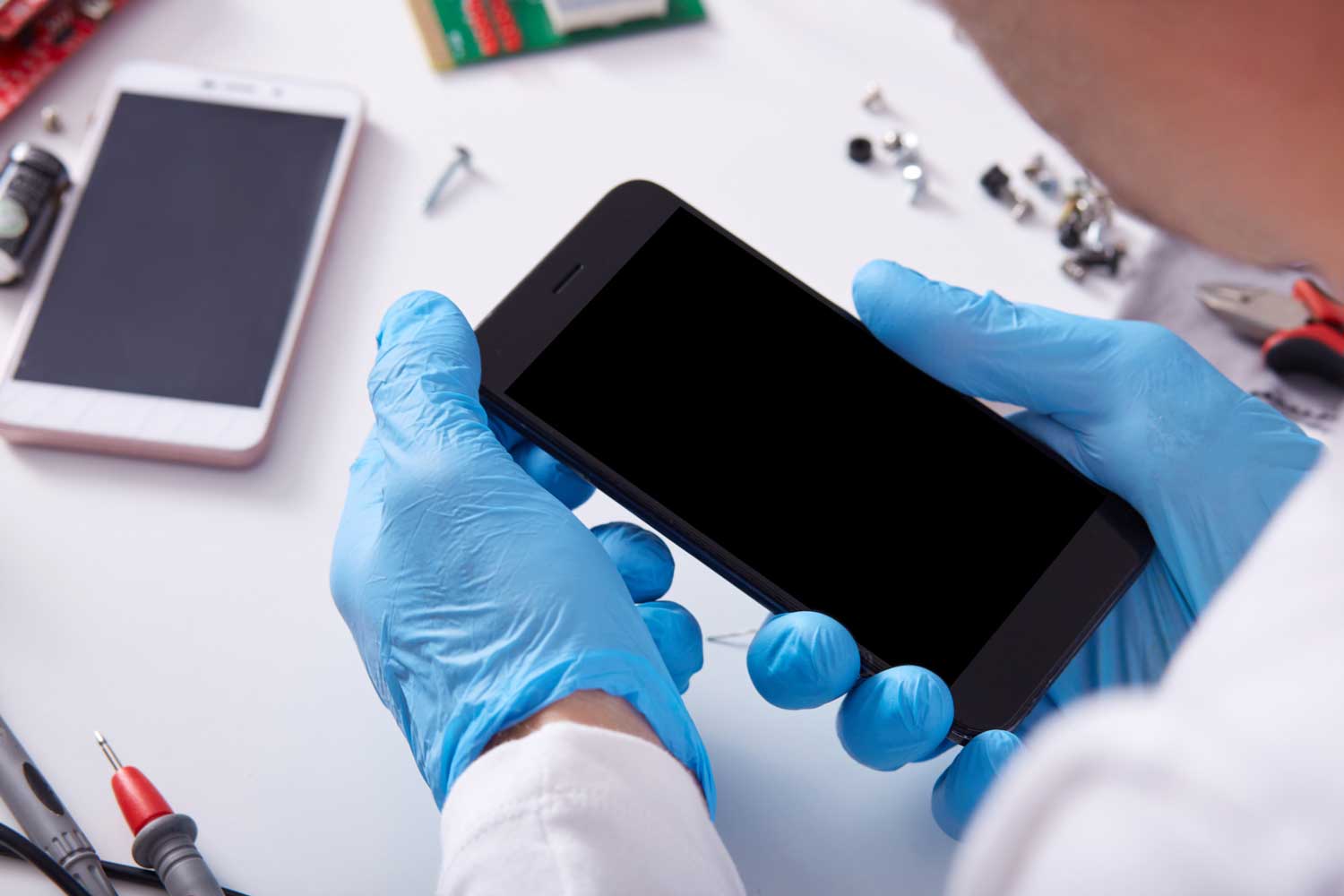The most important concern for business developers at present is to ensure seamless user experiences across a multitude of mobile devices. With the increase of smartphones and tablets, users expect flawless and smooth performance, regardless of the device they use.
In order to meet these expectations, many organizations are turning to a priceless resource known as a “mobile device lab.” Wandering, what does this technical term mean? Let’s make it easy for you. A mobile device lab provides a dynamic testing environment that allows developers and quality assurance teams to thoroughly assess and accelerate the performance of their applications on various mobile devices.
In this article, we will go deep into the important aspects of using a mobile device lab to ensure that your mobile apps and websites offer a consistently smooth and user-friendly experience, elevating customer satisfaction and ultimately driving success in your business.
Process To Use Mobile Device Lab For Ensuring Seamless User Experiences
There are several strategies and considerations for using a mobile device lab to ensure seamless user experiences. A lab can help you test your mobile apps, websites, and services across a wide range of devices and platforms to identify and address potential issues. Here are some of the best strategies to set up and manage a successful mobile device lab:
Define Your Objectives
The most crucial starting point in the process of ensuring seamless user experiences is defining your objectives for a mobile device lab. This step involves enunciating the purpose and desired outcomes of your device lab. In essence, it sets the direction for your lab’s activities and guides you to make decisions throughout the establishment and operation of the lab.
Let’s say if you focus on quality assurance, the primary aim is to ensure that your mobile applications or websites meet predefined standards of functionality, reliability, and security. In this context, your lab will emphasize strict testing, bug identification, and test case creation. The objective is to catch and correct any defects or issues that could compromise the user experience.
On the other hand, if testing usability is your primary objective, your lab’s mission is to evaluate how user-friendly and intuitive your mobile applications or websites are. This includes conducting user testing, gathering user feedback, and identifying areas for improvement in terms of design, navigation, and overall user experience.
The purpose is to enhance the user interface and overall user satisfaction. And if performance optimization is the core point, your lab’s gonna focus on evaluating the speed, responsiveness, and resource efficiency of your mobile applications. This could involve load testing, stress testing, and identifying bottlenecks that might hamper performance. The final goal here is to make sure that your applications run smoothly and efficiently on various devices and under different conditions.
It’s crucial to understand your goals because it shape the strategies, methodologies, and tools you will employ. It also creates an impact on the selection of mobile devices for your lab and the allocation of resources. By clearly defining your objectives and being specific about them, you ensure that your mobile device lab is purpose-driven and its efforts are directed towards achieving the desired results, ultimately resulting in a seamless user experience for your targeted audience.
Device Selection
The next pivotal step to ensure seamless user experiences is the process of device selection for your mobile device lab. It calls for a thoughtful and comprehensive approach to choosing a wide range of mobile devices that accurately and perfectly represent your target audience. Several factors must be considered, including OS versions, screen sizes, manufacturers, and popularity within your target market.
It is important to keep your device checklist up to date to maintain the effectiveness of your lab. The diversity in your device selection is a must because mobile users differ significantly in their device choices. By considering factors like operating system versions (iOS, Android, etc.), screen sizes (from small smartphones to large tablets), and manufacturers (Samsung, Apple, Google, etc.), you are better prepared to identify and address potential issues that might arise on different devices.
Additionally, It’s crucial to understand your target market and its demographics. Select mobile devices that are well known among your audience, as this ensures that you’re testing on the platforms that your users are likely to utilize and be comfortable with. This alignment with your target market helps to capture scenarios of the real world and user experiences. Regularly updating your device inventory is equally important.
The mobile landscape is dynamic, with new devices and software updates coming out every second. Ensuring your lab is prepared with the latest devices and operating system versions allows you to stay updated and continue providing seamless user experiences. It also allows you to adapt to changes in user preferences and technologies, ensuring your applications or websites remain compatible and functional across the ever-changing mobile ecosystem.
Testing Environment
Building a controlled testing environment is a crucial aspect to ensure a seamless user experience in a mobile device lab. This includes creating a setting that nearly imitates real-world conditions to analyze how your mobile applications or websites perform. In order to achieve this, you need to consider various factors, including network speeds, environmental factors, and lighting conditions. Additionally, network emulators or simulators are valuable tools to replicate different network conditions. Generating a controlled environment means setting up conditions that are as near as possible to what users might face when they use it on a daily basis.
This includes emulating various network speeds, such as 3G, 4G, or Wi-Fi, to assess how your applications or websites perform under different connectivity scenarios. Network emulators allow you to replicate network congestion, slow connections, and intermittent connectivity, helping to identify and rectify issues related to network performance.
Environmental factors can also impact user experiences. Like, testing in extreme temperatures, humidity, or varying altitudes can be relevant, especially if your applications are used in outdoor or rugged environments. Analyzing your app’s performance under these conditions can help ensure its reliability and usability in scenarios of the real world.
Lighting conditions matter for devices with screens. Testing under various lighting conditions, including bright sunlight or dimly lit environments, can help you determine how well you can use your apps or websites, which is especially important for mobile users who access content on the go.
Automation
A key strategy to ensure seamless user experiences is implementing test automation in a mobile device lab. Test automation includes using specialized tools, like Appium, or Espresso, to automate repetitive and regression testing tasks across a wide range of devices and platforms, ultimately improving testing efficiency and reliability.
By leveraging automation, you can implement test cases consistently and repeatedly, which is especially important in regression testing. Regression testing involves checking whether new changes or updates to your mobile applications have introduced new defects or affected existing functionality. It can take a length of time and can be prone to error when done manually, but test automation streamlines this task.
Appium: Appium is an open-source tool for automating mobile applications on iOS and Android. It allows you to write test scripts in various programming languages, offering flexibility and cross-platform capabilities.
Espresso: Espresso is the most used testing framework for Android applications. It’s well-suited for UI testing and is tightly integrated with Android Studio, making it an efficient choice for testing Android-specific features and functionality.
Automation in your mobile device lab not only saves time but also increases test coverage. It allows you to run test suites across a wide range of devices and OS versions systematically, helping identify potential issues that might arise on different platforms. This systematic approach to testing ensures that your mobile applications or websites maintain consistent quality and functionality, contributing to a smoother and more reliable user experience.
How LambdaTest Can Help With Seamless Mobile User Experience?
LambdaTest, an AI-powered test orchestration and execution platform, can significantly contribute to ensuring a seamless mobile user experience. In the present digital landscape, where mobile devices play a central role in connecting businesses with their customers, the importance of responsive design and flawless performance cannot be exaggerated. Let’s see how LambdaTest can help you in achieving just that:
Device and Browser Compatibility Testing: LambdaTest provides access to a vast array of real mobile devices, tablets, and browsers. By testing your website or application on these devices, you can be sure that it works seamlessly across different platforms, screen sizes, and operating systems. This comprehensive testing makes sure that your users have a consistent and reliable experience, regardless of the device they use.
Responsive Design Testing: LambdaTest allows you to test how your website or app responds to various screen sizes and orientations. You can check if your design elements are adapting correctly or not, ensuring that content is displayed optimally, images are appropriately scaled, and navigation remains user-friendly on mobile devices.
Automated Testing: LambdaTest offers automation capabilities that allow you to create and run test scripts across multiple devices and browsers at the same time. This accelerates the testing process, identifies potential issues faster, and helps you achieve quicker and more trustworthy results.
Visual Regression Testing: LambdaTest’s visual testing capabilities help you to compare screenshots of your web pages across various devices and browsers. This helps you identify any discrepancies in layout, fonts, or visuals, allowing you to address issues promptly and maintain a compatible brand image.
Real-Time Testing: LambdaTest provides real-time interactive testing, allowing you to access and control real devices remotely. This feature helps in marking performance bottlenecks, usability issues, and any unexpected behavior on specific devices, enabling immediate corrective action.
Conclusion
Using a mobile device lab is a potent strategy for guaranteeing seamless user experiences across a wide array of mobile devices. By investing in this infrastructure, organizations can effectively test and optimize their apps and websites, ensuring they perform smoothly on different platforms and screen sizes. The commitment to delivering a consistent and user-friendly experience not only enhances customer satisfaction but also fosters the brand’s reputation and competitiveness in an increasingly mobile-centric world. Welcoming the technology and methodology of a mobile device lab is an investment in the present and the future too, enabling businesses to stay ahead in the ever-changing landscape of mobile technology. So, whether you’re a developer, a QA engineer, or a business owner, think about incorporating a mobile device lab into your workflow to provide your users with the seamless experiences they expect and deserve, and thank you later for it.











